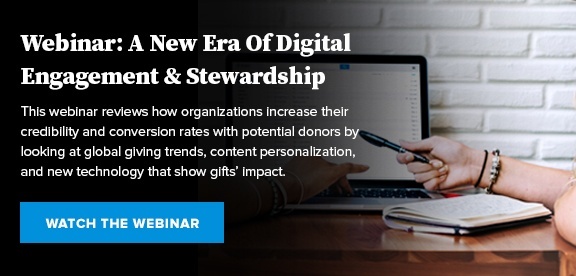Both charitable giving and online donations have seen substantial increases in the past year (7.1% and 13%, respectively). In order to take full advantage of these trends, fundraising organizations need to ensure that their digital experience meets the needs of today’s donor. These five digital nonprofit fundraising strategies are sure to improve your digital fundraising efforts:
1. Tie Donor Actions to Numbers
Using specific numbers to explain how a donation impacts your mission gives users a concrete vision of what their gifts will be used for.
One effective way to do this is by listing how donations at various amounts can impact your organization’s mission. My favorite example of this is Oxfam’s Unwrapped, which allows users to see how donations of various amounts purchase life-saving livestock, training, or materials for people in need:
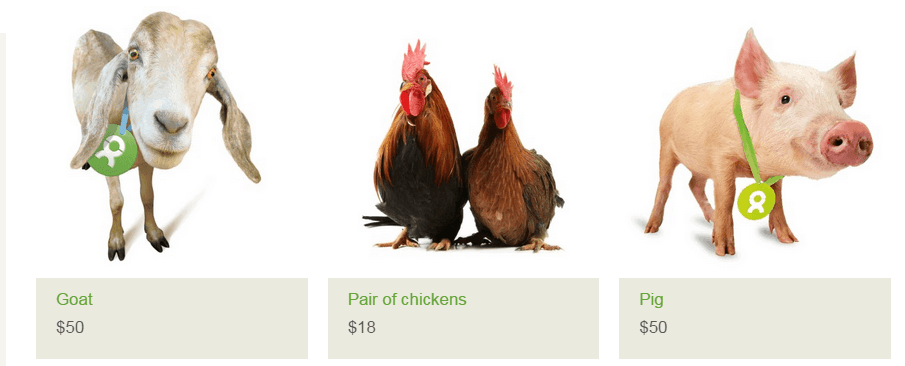
If your mission doesn’t deal in goats, chickens, or other physical commodities, tie the donation amount to what it means for the mission in terms of progress. Showing the impact of a constituent’s support is key to getting them to come back and give again, as well as to encourage others within their personal network to give. Think how much easier it is for volunteers to raise money from friends, family, and colleagues if they have these raw numbers to point to. In fact, Oxfam’s Unwrapped initiative is centered around letting buying these symbolic presents for friends to help spread the word about the organization’s mission.
The more visual you can make this the better. Visual content is simply easier for people to consume quickly, and it stands out amid a sea of words that, frankly, most people would rather scan over. Here’s another great example from Doctors Without Borders showing how impactful hard numbers can be when explaining how donations are used, both in terms of percentages of gifts being put in action and raw numbers of recipients impacted:

Infographics are a hot commodity and just one fantastic way to present numbers. However, if you’re intimidated at the notion of creating them, PowerPoint offers a variety of tools to bring some pop to numbers without needing to bring on a graphic designer.
2. Write a Blog
Potential donors and volunteers need to be educated about your organization, the cause, and how they can help make a difference. Perhaps most importantly, everyone involved with your organization needs to be inspired. If you’ve already read tip #1, you’ve shown the impact of a donation in numbers – now it’s time to show what that means on a personal level.
Tell a story to show the ultimate impact of a donation. Nonprofits who do great jobs storytelling will also provide updates throughout the process. Are you providing scholarships? Have recipients tell stories in their own words about what an education has meant to them and their family. Check in with them at regular intervals after graduation to report on their progress. This connects your donors and volunteers with those who are being directly impacted by the missions. charity:water does a wonderful job of storytelling, particularly through video, to show the impact of wells being funded by donors. Check out this video to see how they tell their story.
These stories can be reiterated through all your communication channels – your website, social media, print brochures, events, etc. Storytelling connects the achievements of your organization and your constituents, and creates evangelists, repeat donors, and long-term loyalty. It will tie back to what your leads are passionate about and the cause they want to help.
Telling these stories through blog posts on your site also has a much more practical benefit: more content on your site means more visitors finding you and learning about your mission. A recent study shows that organizations who blog have up to 55% more website visitors than those who don’t blog. By blogging, you are creating more content for search engines like Google to index, thus increasing your credibility for certain topics. With more content and credibility, you’ll start accumulating more inbound links as other websites start pointing to you. As the chart below shows, the more you blog, the better the results will be. In fact, companies that blog 15 or more times per month receive 5X more traffic than companies that don’t blog at all.
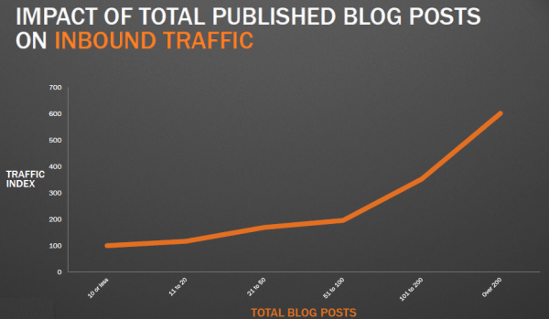
More visitors means more opportunities to convert people into donors. If you are constantly testing and improving your conversion rate (see tips 4 and 5 below), this traffic boost can have a huge impact. In fact, according to the 2015 M+R Benchmarks Study, for every 1,000 website visitors, nonprofits raised an average of $612 in 2014.
3. Turn Donors Into Advocates with Nurturing Emails
Most organizations would kill to have other people evangelizing for them. Why? Because 1) it’s more efficient in terms of resources, and 2) the source is more credible. That means you have a huge opportunity to communicate your organization’s mission and impact if you’re enabling donors to become more than just a one-time giver – you should be nurturing them into advocates! And you can do that efficiently using email marketing and nurturing tools.
When an individual makes their first donation online, send your standard donation receipt, your heartfelt thank you, but then follow up with them via email the next day with some content that enables them to communicate your mission with others. Send them information on how they can volunteer for your organization, start a fundraiser themselves, or how they can become an activist for your cause.
Over the next few weeks, email them with materials that contain short tips to make them a successful advocate for the fund they supported. This doesn’t have to be expensive t-shirts or fancy posters, it can simply be an image for them to tweet or post on their Facebook wall to spread awareness to their personal network. You can also send them three email templates with suggested copy for them to send to their colleagues, friends, and family, asking them to donate to your mission, as well. This is an especially effective tactic as Giving Tuesday gains traction.
Retaining constituents should be one of your top organizational priorities. The longer someone is engaged with your organization, the higher their contributions become and the deeper their connection is to your mission. Your organization becomes part of their day-to-day activities and in many cases, part of their family. Use your email tools to share what you know with those that are willing to give to and support your cause.
White Paper: Improve Donor Relations and Outreach with Young Alumni
3. Say Thank You
For fundraisers, saying “Thank you” should be like breathing – you never stop!
In addition to prompt and personal acknowledgements after a donor makes a donation, you should send consistent affirmations about the value they bring to your organization. This can take the form of donor stories on your website, mid-year updates written from the recipients of your services, or the more traditional personalized thank you note.
Annual online donor reports are another great way to thank donors in a creative and interactive way. It allows donors to see how they fit in with the bigger donor picture, while subtly providing a little competition that may benefit your organization the following year. For some examples, you can see several donor thank you sites in our work section.
4. Make Clear Calls-to-Action with a Stated Benefit
It’s really important to guide your visitors through the buying journey using effective calls-to-action (CTAs). The best CTAs balance an effective design and clickworthy copy into an experience that visitors can’t keep away from.
A great call-to-action should stand out visually, list the benefits of giving, and take on the voice of the donor. For example, let’s start with a standard CTA that you’ve no doubt seen on every non-profit website:
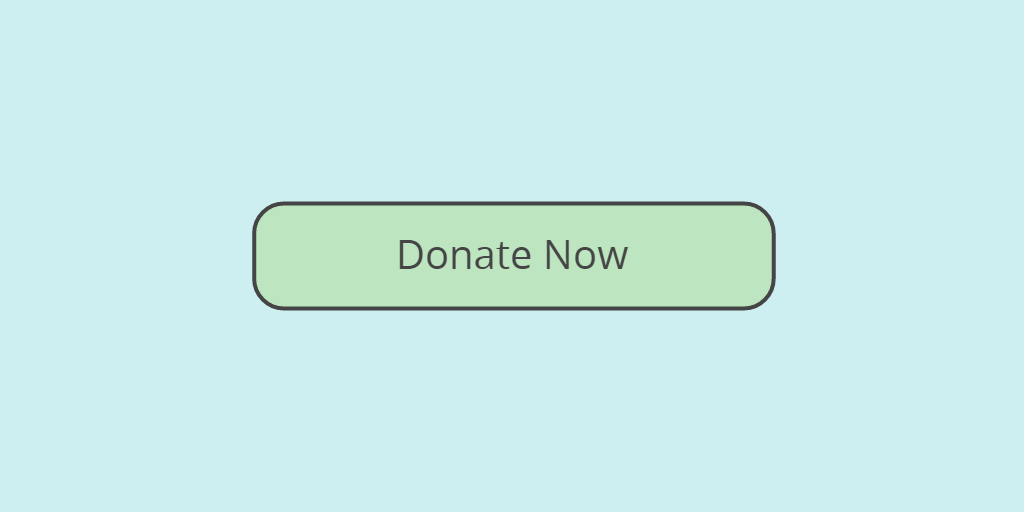
The copy is straightforward, but it doesn’t speak to why anyone would want to give money to this organization. Also, the color of the button blends into the background, which doesn’t help distinguish it from the rest of the page.
Contrast the first button with this revision:
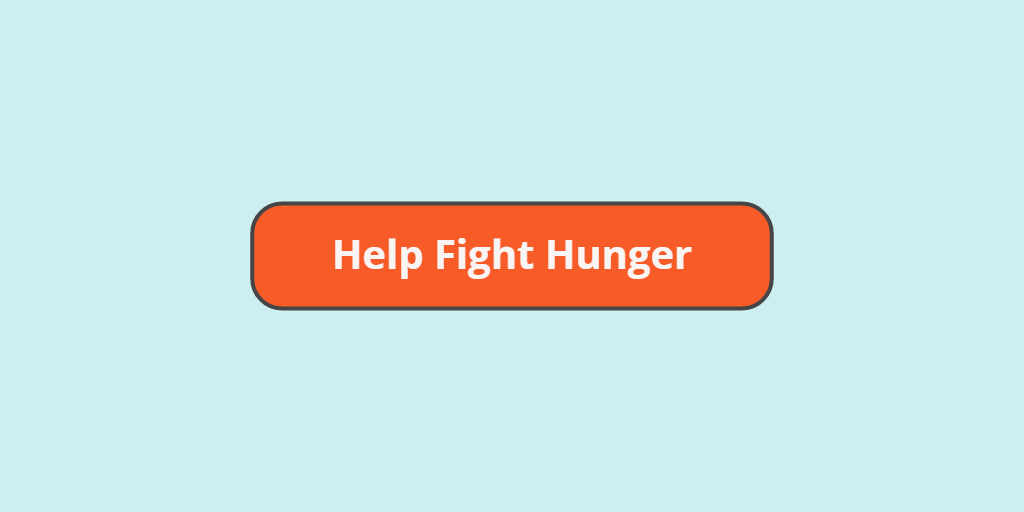
Changing the color to orange adds a dramatic contrast to the background, which pulls in the user’s eye. The copy is in bold, which helps readability. Also, the language used is much more impactful and speaks to the user’s motivation for supporting this organization. (Now, one caveat: I would use this button copy only in places where it is contextually appropriate, such as pages discussing how donations are used to advance the organization’s hunger-fighting mission when it’s clear that clicking on it will lead to a donation page.)
The call-to-action may seem like a simple part of fundraising campaigns, but it is one of the most crucial. With motivating, urgent,clear calls-to-action, your organization is more likely to connect with and engage individuals to contribute to your cause in more meaningful ways.
These changes, while small, can have a dramatic affect on an organization’s click-through and conversion rate.
5. Test, Measure, and Test Again
Organizations should design and test a number of different calls-to-action to see which ones lead to the highest click and conversion rates. Even subtle changes in copy, color, or layout can have a significant impact in the number of people who end up pulling out their wallet, filling out your form, and hitting the big Submit button. This way, you can measure the performance of each and use those metrics to determine which one is highest performing, optimizing your overall fundraising amount.
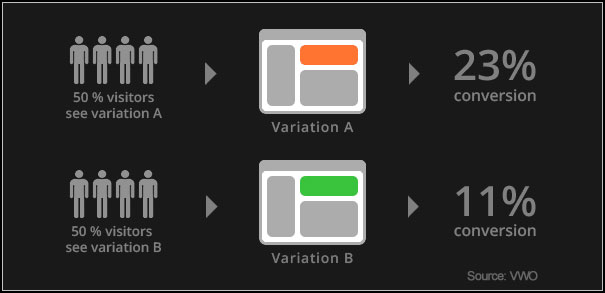
There are plenty of online resources that can help with A/B testing and personalization, such as Optimizely or VWO, which allow users to test different versions of pages to see which changes lead to increased performance.
Conclusion
Implementing these five digital fundraising strategies will make a huge difference in your nonprofit’s performance. Using digital tactics to attract and engage your donors can have lasting impacts are are definitely worth undertaking.


